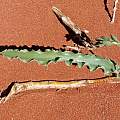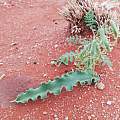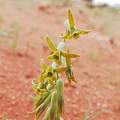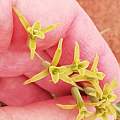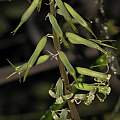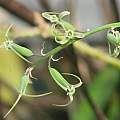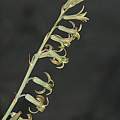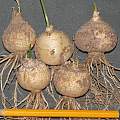Dipcadi is a bulbous genus in the Hyacinthaceae family found in Africa, the Mediterranean, and India. Flowers are bell-shaped or tubular. J. Manning, P. Goldblatt & M.F. Fay in a "A revised generic synopsis of Hyacinthaceae in sub-Saharan Africa, including new combinations and the new tribe Pseudoprospereae", Edinburgh Journal of Botany 60(3): 533-568 (2004) proposed sinking this genus along with Albuca, Galtonia, Neopatersonia, and Pseudogaltonia into Ornithogalum. Further work by researchers at SANBI, the Missouri Botanical Garden and Kew has not supported all of these changes and Albuca, Dipcadi, and Pseudogaltonia have been reinstated.
Dipcadi ciliare (Eckl. & Zeyh. ex Harv.) Baker is native to the summer rainfall region of South Africa. The first two photos were taken by Dylan Hannon of a form from Grahamstown, South Africa. The last three are from Bert Zaalberg.
Dipcadi crispum Baker is native to Namibia and the Northern Cape Province of South Africa. The first five photos were taken by Christiaan van Schalkwyk days after an unusual heavy rain in a drought in the Upington area, Northern Cape, South Africa, December 2019, of plants growing in full sun in sand. The last photo was taken by Margaret Fox August 2022 in the Tankwa Karoo.
Dipcadi longifolium (Lindl.) Baker is native to tropical and Southern Africa. Growth begins at the start of the rains with the flower stalk emerging along with the leaves. Plants occur in woodlands and wooded grasslands. Photos by Nicholas Wightman of plants naturally occurring in Lilayi, Zambia.
Dipcadi marlothii Engl. is distributed from Ethiopia to southern Africa (Ethiopia, Kenya, Zambia, Zimbabwe, Botswana, Angola, Namibia and northern South Africa). It is found in grassland and rocky ground in open woodland. It has wiry leaves that are often spirally twisted when young that appear after the yellowish green brown flowers that are slightly recurved at the apex. Photos from Bert Zaalberg.
Dipcadi rigidiflorum Baker is native from Zimbabwe to the Northern Cape Province. It is a summer grower. These plants appear to be self-fertile. The photos below were taken by Nhu Nguyen.
Dipcadi serotinum (L.) Medik. has a very small flower that appears at odd times in summer. The colors are all very "subtle," dull green and peach-tan. The seed is very easy to collect and sets in abundance. It is from southwest Europe and North Africa. Photo 1 was taken by Sheri Ann Richerson and photos 2-3 were taken by Dylan Hannon of a form from Quinta do Lago, Portugal. The last two photos were taken by Bert Zaalberg. The last is a habitat photo taken in Spain.
Dipcadi serotinum var. fulvum (Cav.) Ball is a form growing in mainland Spain and the Canary Islands. It is a late bloomer that can be found in flower until July, growing in dry habitats. It differs from the type by its yellow/creamy flowers. The two photos were taken in its habitat in the Spanish Pyrenees by Oron Peri.
Dipcadi sp. Fianarantsoa, Madagascar -- the photos below were taken by Dylan Hannon.
The photos below were taken by Nhu Nguyen of the same form.
Dipcadi sp. ex Robertson, South Africa -- the photo was taken by Dylan Hannon of a form near Robertson, South Africa.
Dipcadi sp. ex Isalo, Madagascar -- the photo was taken by Dylan Hannon.
Dipcadi viride (L.) Moench is an extremely widespread species from the Arabian Peninsula to tropical Africa and south to Africa. The photos below were taken by Dylan Hannon of plants from Yemen. Photo 1 shows a form from Hadramaut (Lavranos et al. 31292), and photos 2-3 show a form from Wadi Salul (Lavranos & Gifri 30740).
The photos below were taken by Dylan Hannon of a form from west of Alldays, South Africa. It's a small, delicate form with ciliate leaf undersides and ciliate flowering stems.
The photos below were taken by Dylan Hannon. The plants came from one batch of seeds, originally from Grahamstown, South Africa. Note variation in color and tepal appendages. The bulbs are rather large for a Dipcadi. This plant is semi-evergreen in a mild climate but is mainly summer growing.





